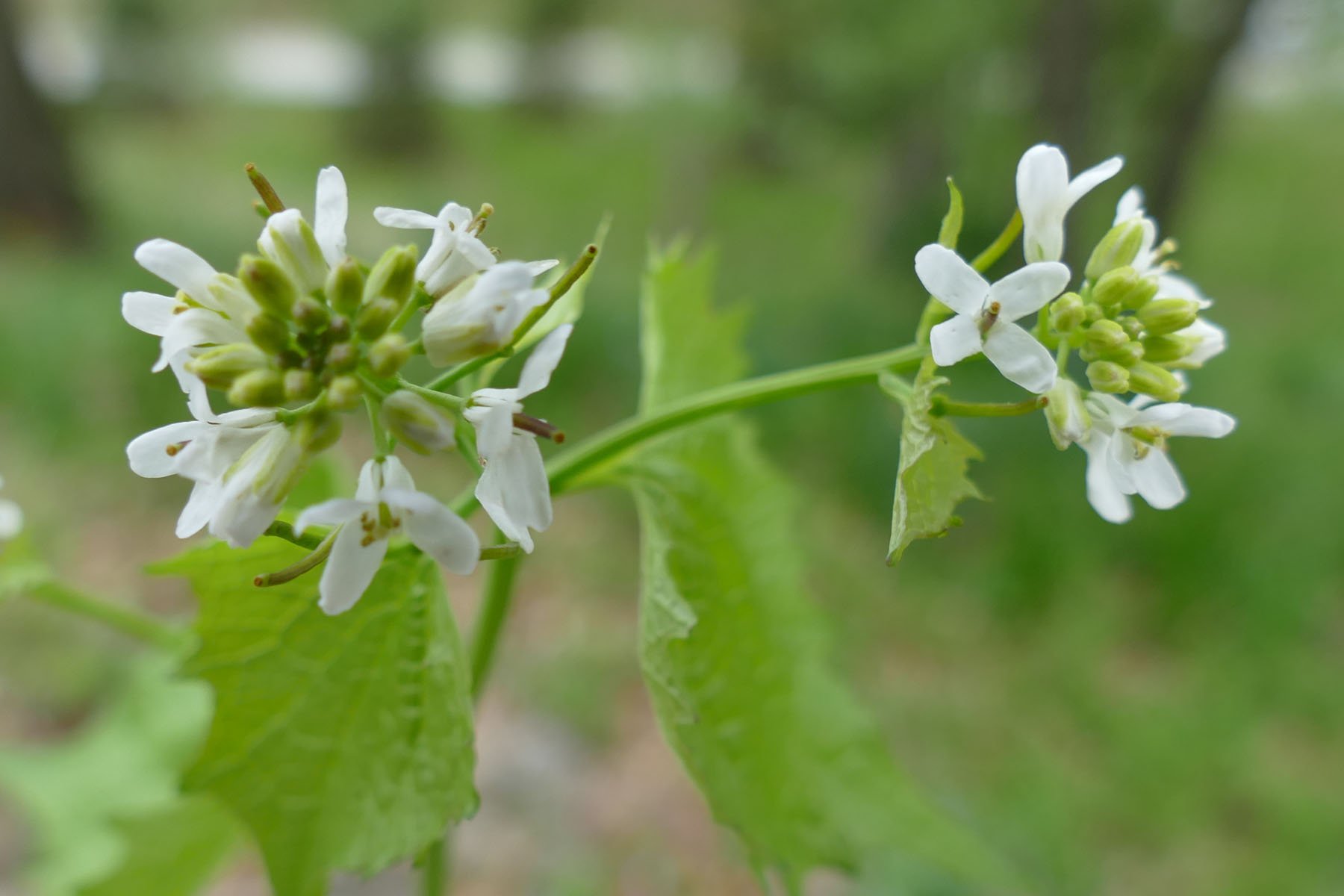
Garlic Mustard
Residents of Beverly Shores have long battled an invasion by garlic mustard, a weed that threatens to take over the forest floor if left unchecked. First year plants germinate from seed produced profusely by ancestors. Second year plants have tall stems capped with flowers that yield their own contributions to the seed supply before dying in June. Deer don't like garlic mustard, helping the plant compete more effectively with native forest floor plants that deer consume avidly. Garlic mustard has its own competitive advantages. It grows rapidly in early spring and in late fall, getting a jump on competition. Its first year leaves stay green over winter, allowing it to choke out most native spring flowers. In addition, garlic mustard produces allelopathic compounds that can inhibit seed germination by rival species.
Garlic mustard rampant
Garlic mustard flowers
First Year Plant
-
Garlic mustard loves the moist understory of Beverly Shores woodlands. You can recognize first year plants as green rosettes with kidney-shaped leaves that have serrated edges. Second year plants throw up stalks several feet tall that have triangular leaves and are capped with clusters of four-petaled flowers. Crush a leaf between your fingers and sniff—it smells like garlic.
-
Garlic mustard colonizes disturbed ground, particularly at the edges of roadways, but can also invade even heavily shaded and undisturbed forest floors. It likes moisture, but is not picky about light or soil. Left alone, it would almost completely take over the forest floor in Beverly Shores.
-
Garlic mustard's competitive strengths allow it to squeeze out native wildflowers like trillium, Dutchmen's breeches, spring beauty, bloodroot, hepatica, and toothwort. These native flowers are both eaten and trampled by deer. In their weakened state, they are no match for garlic mustard, which deer leave alone. The result is a forest understory that is unsuitable to wildlife and bereft of the beauty of native spring wildflowers.
-
The Beverly Shores stoop comes from residents bending over to pull shallow-rooted garlic mustard. The plants are easy to remove, but it is important to grasp them near the ground, as plants can sprout from root fragments. Pulled plants should be disposed of whenever possible to prevent the dispersal of their prodigious amounts of seed. If pulled and left in place, garlic mustard will continue to flower and produce seed, so please dispose in garbage bags. Do not compost.

